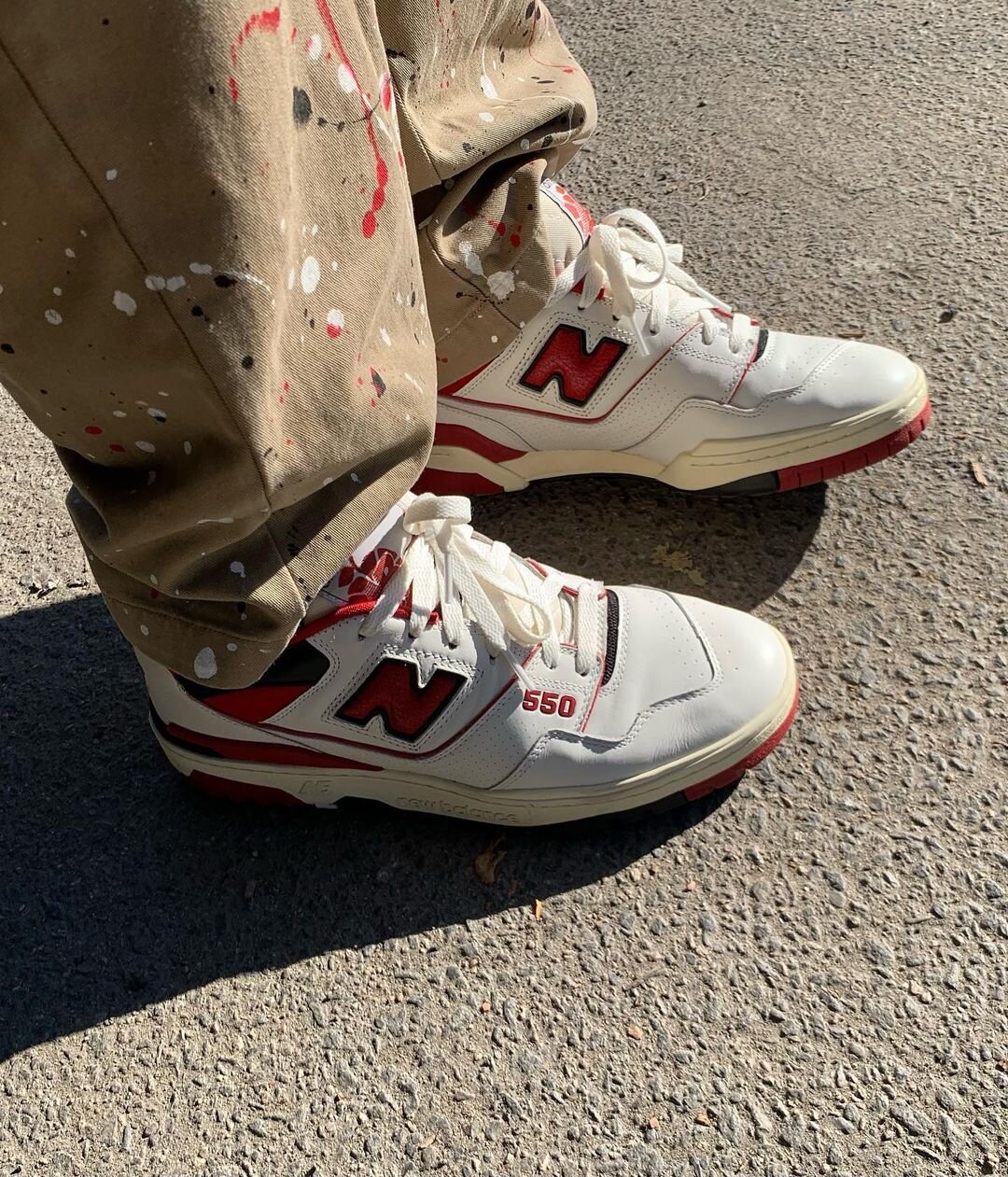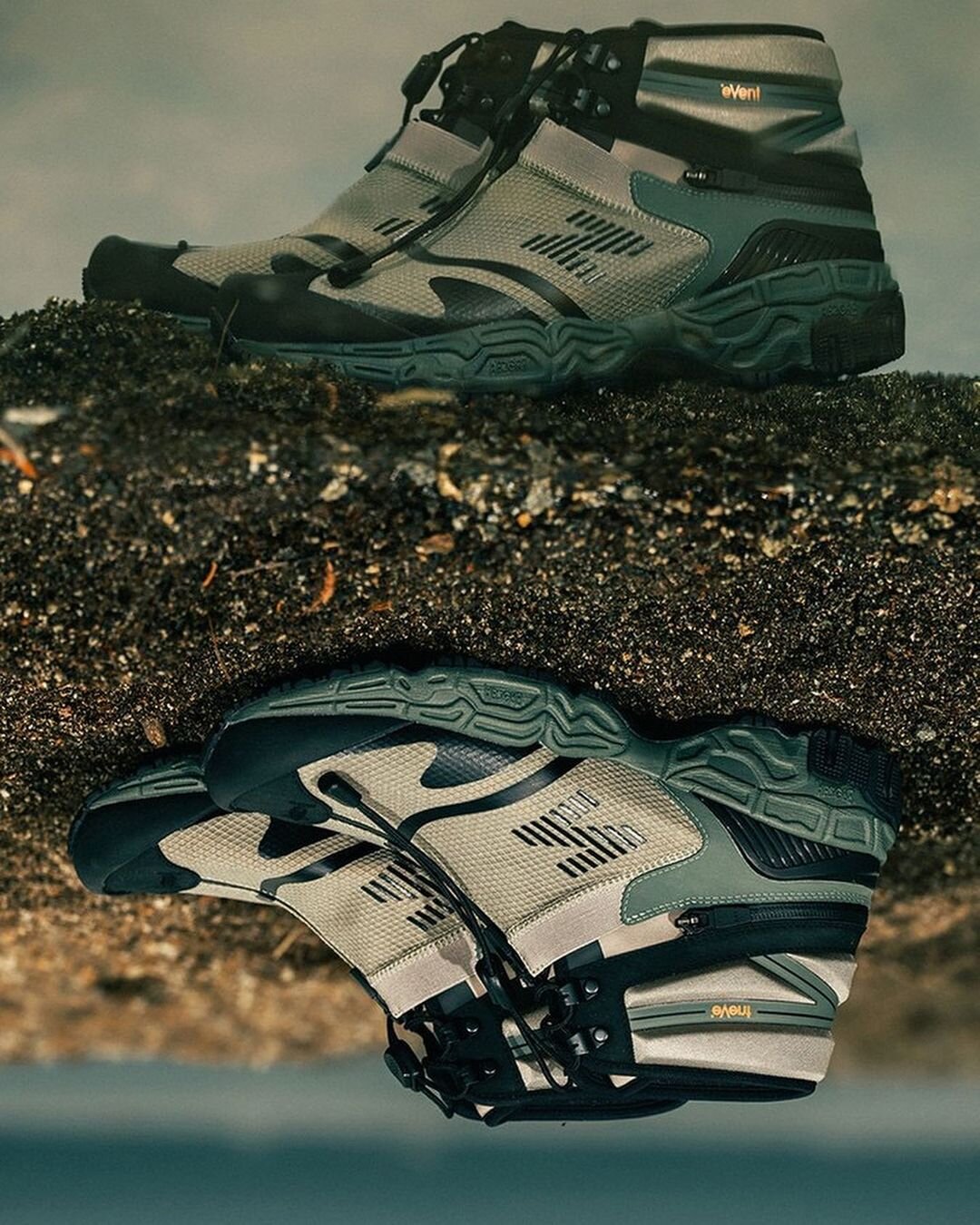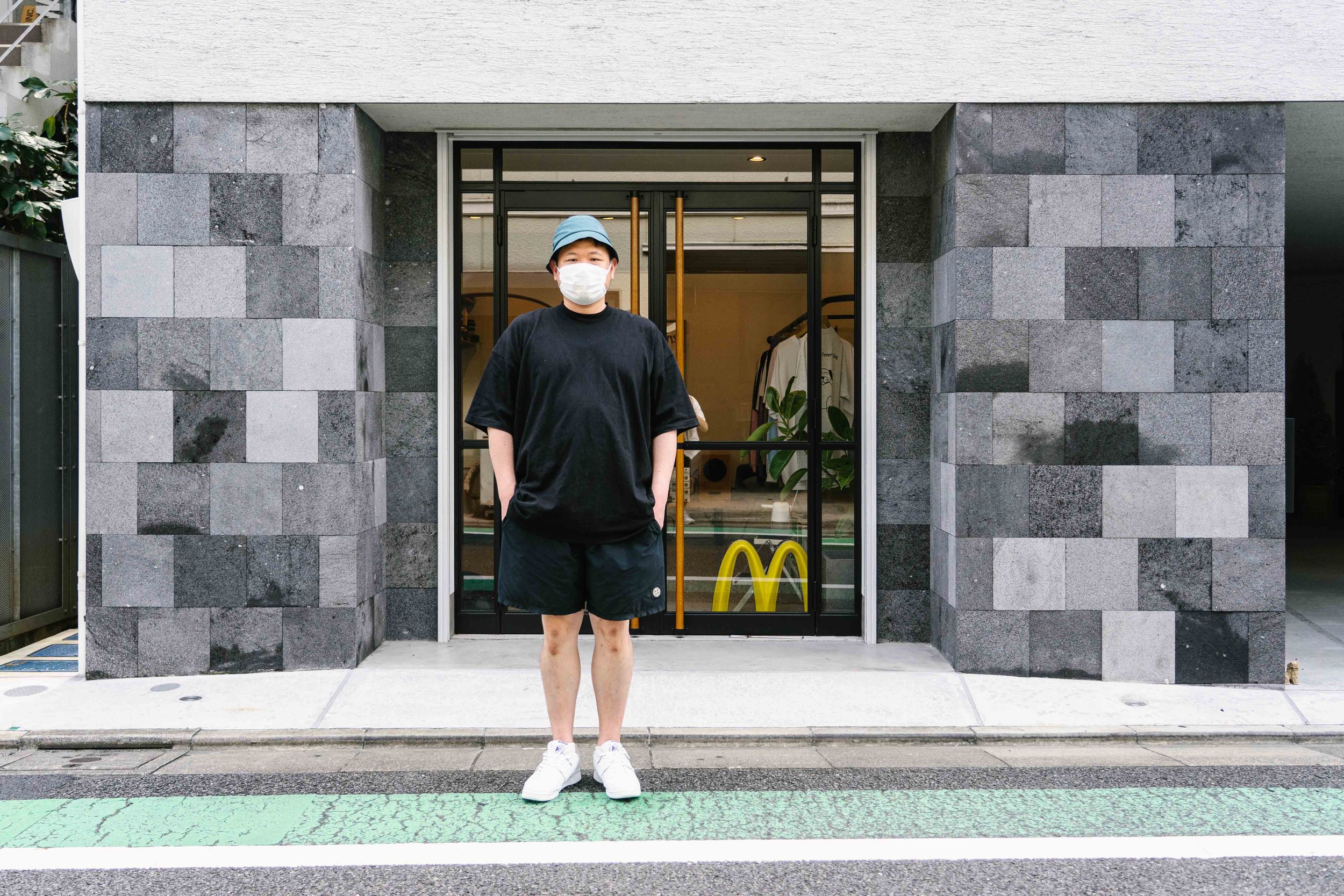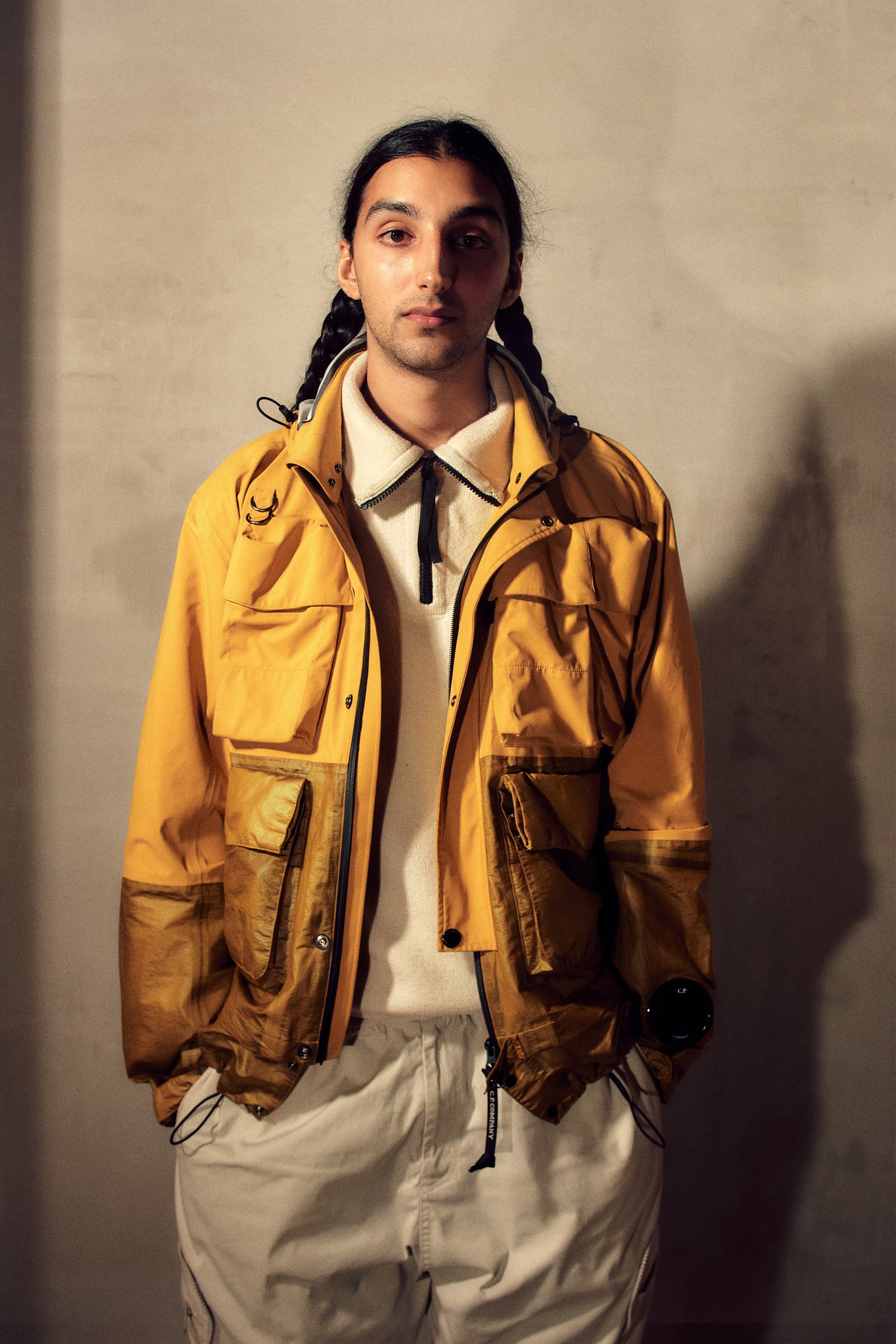CULTIVATING ENERGY: A CONVERSATION WITH JOE GRONDIN
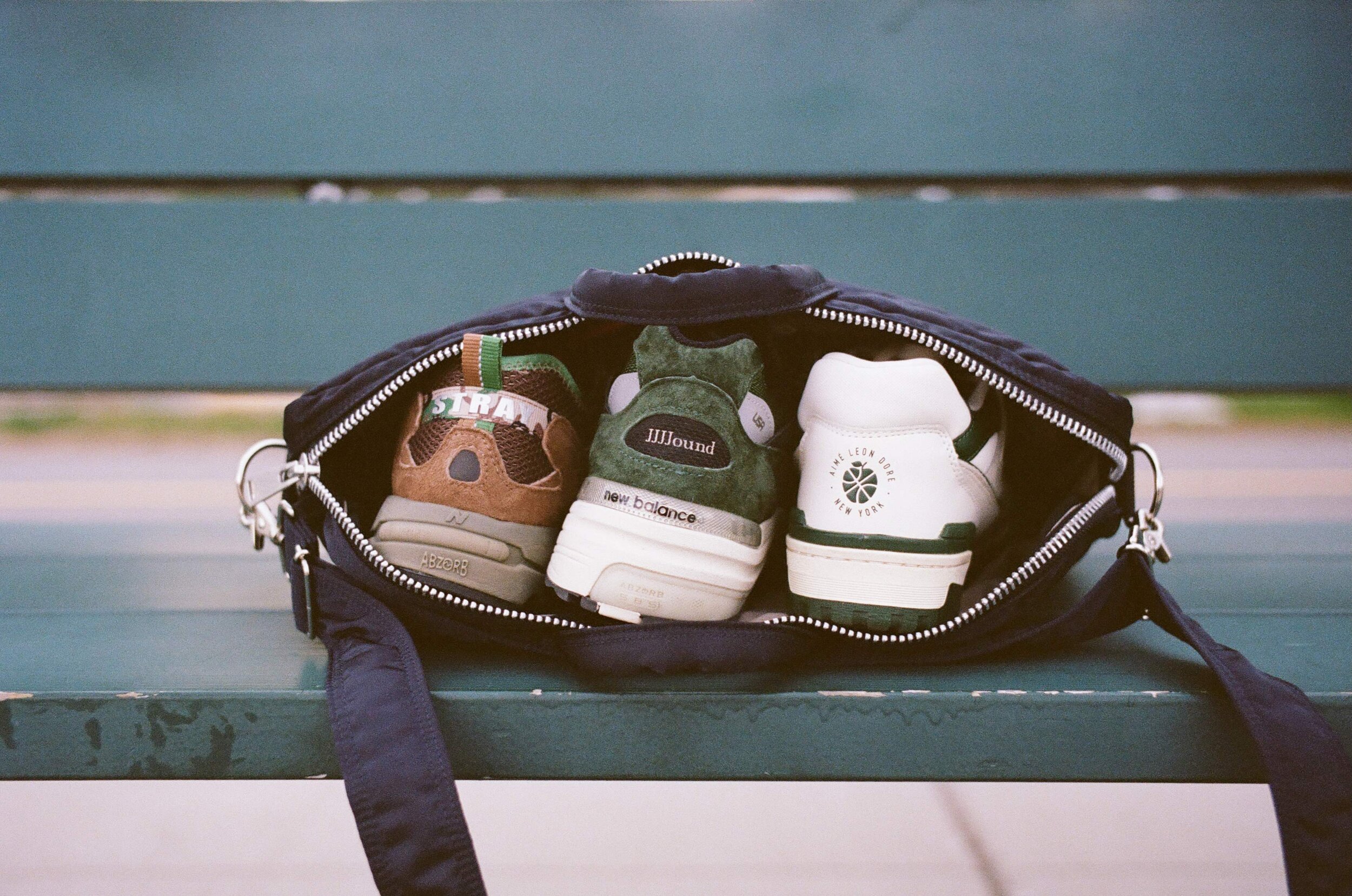
Rarely has a brand seen such an organic and healthy growth trajectory within the sneaker space as New Balance has in the recent handful of years. Not an unnerving amount of hype but just enough; not only relying on one popular model but utilizing a range of silhouettes and long-term partners to consistently deliver an appealing product.
From JJJJound’s earth-tone minimalism and Harajuku-realness with WTAPS or New York underground youth culture with Stray Rats to maybe a bit more mainstream appeal through a Jaden Smith signature shoe - just to name a few – a wide spectrum is covered. It seems like New Balance has struck a newfound balance (every pun intended) of relevance in different nooks of street culture with their thoughtful approach to collaboration. This “energy”, as it is referred to in the sneaker industry nowadays, is the lifeblood of a brand’s value in a market with constantly fierce competition for eyeballs.
Entering all these different lanes while staying true to the core roots of the brand and not offending “purists” – of which there are a lot of in New Balance’s case – certainly was, and still is, not an easy feat. Naturally, this course correction didn’t happen by chance. One of the main navigators driving this development forward at New Balance is Joe Grondin. He joined us to talk about his personal career and how the Boston brand approaches the discipline of sneaker collaboration as well as its future.
Dear Joe, thanks a lot for taking the time.
could you please briefly introduce yourself to the Sabukaru Network?
My name is Joe Grondin and I am the Senior Manager of Global Collaborations and Energy at New Balance. My team and I are responsible for the partner strategy, relationship management, and product creation across all our Global Collaborations and energy programs such as Tokyo Design Studio.
Salehe Bembury said that you have “the ability to build a team as if you are the conductor of a symphony.” In total, your collaboration roster spans across an array of style niches and brand aesthetics. How differently do you manage these different kinds of partners? How do you “conduct this orchestra“?
When building out this roster, we were looking to find a variety of brands that cover different niches or sub-categories along the fashion/culture spectrum. Each partner does a different job and brings a unique look and feel to the brand. We say no to a lot of collab opportunities because we usually already have a long-term partner occupying the particular space and we don’t feel like there is much need for overlap once you get it right.
Although all the relationships are managed slightly differently, there is a consistent passion from all our partners that drives close communication and collaboration. Now that we have assembled the right “orchestra,” the “conducting” is really all about positioning our partners with the right product stories at the right time. For me, being able to understand New Balance and its priorities just as well as our partners and their goals is the best way of doing so. If we are both winning, the projects will continue to be exciting and successful.
New Balance shifted from retailer focused collaborations to broader brand partnerships and projects with individual designers or creators in the last few years. Also, they seem to give more freedom to their collaboration partners now than before (allowing placing their brand name/logo directly on the upper instead of only on detachable parts like insoles or laces/lacelocks). What motivated this adaption of methodology?
The acceleration from the competition in this collaborative space really motivated our change in strategy. New Balance has always relied on its organic ties to culture to drive the conversation, which is great, but it felt like the right time to engage with new creatives in a more official way to help tell our story.
Retailer projects are important, but we found ourselves talking to the same NB loyalist sneakerhead with each project when we were solely focused on them. As soon as we switched it up and started tapping into new brands and creatives, we saw a lot of new consumers coming to the brand. It also allowed us to get NB on the feet of influential people within the networks of these brands, which just widens the appeal of New Balance even more.
We decided a few years ago that we were going to loosen up our traditional branding guidelines for collaborations. With our aspirations to work with some of the most progressive brands and creators in the world, we needed to make certain decisions to evolve with the times and meet the partner’s and consumer’s expectations.
From our vantage point, basketball silhouettes have gotten increasingly important in the New Balance retro portfolio. You re-introduced the New Balance 550 together with Aimé Leon Dore under the “International Friendship Through Basketball“ banner and got a great reception. A second round of tasteful colorways is on the way and Auralee teased their own 550; Junya Watanabe put out a BB480. Do you have a personal connection to the sport? Will the game and its culture stay as relevant for future seasons? Can we expect other New Balance Basketball sneakers to return?
Performance basketball is becoming a major priority for the brand so we felt it was important to build out the lifestyle angle as we grow the overall category. NB has a rich history in basketball and a catalog of silhouettes that have never been re-released or explored in any significant way. Through strong launches from ALD, the 550 has become the hero silhouette in this space over the past year. We will look to expand this retro “court” look with them moving forward.
I grew up playing basketball and have always loved the culture that surrounds the sport. Basketball has always played a big part in lifestyle culture in the US but we are seeing the crossover happening globally now more than ever. It is exciting to see these worlds collide in new ways.
Having already mentioned Aimé Leon Dore - we have to talk about the appointment of Teddy Santis as Creative Director for New Balance Made in USA. How did your relationship develop from co-collaborators to him taking such a substantial role at New Balance?
The relationship with Teddy and ALD is a special one. They were one of the first brands we became really invested in within our new strategy. We believed in their vision and they believed in ours which has resulted in 3 years of successful collaboration projects. After delivering time and time again on a variety of different silhouettes, we started talking about how we could evolve the partnership long-term.
I was in NYC right before the pandemic hit and began to speak to Ted about the possibility of bringing him into the brand in a more substantial way. We worked on a business plan around the idea of him as Creative Director for our Made in USA program and pitched it up to NB product and marketing leadership to a great response. Teddy then came in to meet Jim Davis, the owner and chairman of NB, and they quickly bonded over their shared Greek heritage and passion for building brands. We have been working on this unique partnership ever since and are excited to bring it to life in 2022.
Photo by New Balance
Can you tell us a little bit more about what this role entails exactly? Will he also work on collaborations with you or is he mainly going to oversee in-line releases?
Teddy will be overseeing the seasonal Made in USA collection, which is essentially every Made in USA style outside of collaborations and our core offering (ex. OG grey and navy). He will be handling the product design as well as marketing strategy and content creation. Ted has visibility to of all our collaboration projects but will not work on that part of the plan specifically. We will continue to work with ALD on collaboration projects during this time as well.
How involved are you with GR rollouts? To introduce the 327 silhouette in 2020 you placed them in a Casablanca fashion show for example. How do you synchronize with the people managing GR ranges in that context?
I am pretty involved in the GR roll outs of new models and bring backs from a strategy POV as we often position collaborations on these new models at the beginning of their product lifecycle. I stay very close with my manager, Brian Lynn, who oversees the entire lifestyle product creation team. It works well because I have visibility from the early stages of the product process and can start pitching new models to partners early on, sometimes off first prototypes. We build these plans together which allows us to position inline product off the back of collaborations for the “trickle down” effect.
Of course, New Balance doesn’t only release retro silhouettes, and whether you call it “gorpcore,“ “tech wear,“ or “utilitarian fashion,“ the trend of functional or outdoor-oriented gear is still going strong. With its approach of „precision, nature tech, sports craft, and protection“ as well as collaborations with Snow Peak, the Tokyo Design Studio fits perfectly into the realms of product functionality and design innovation. Do sustainability aspects play a role in these projects at all? In terms of fabric innovation or optimized production processes maybe?
Product longevity is a key pillar of sustainability for the Tokyo Design Studio team. We can minimize the environmental impact of our product if the consumer is able to get the most use out of the materials and energy that went into the creation of it. With this in mind, we strive to extend the product lifespan that consumers typically expect from their footwear.
With TDS, there is less pressure on commerciality and therefore more focus on material innovation and product experimentation. This allows us to place a heavy emphasis on the quality and durability of the materials we use, and push boundaries on upper and sole constructions regularly. A recent example is our Niobium series, which experiments with the idea of modular design. We launched the first concept last year with Snow Peak: a waterproof boot that transforms into a camping mule via interchangeable booties with waterproof zippers. Although not obvious, building one product that can be used in different ways across various environments is another way to look at sustainability.
The Tokyo Design Studio also kind of stands for a merging crossover between Japanese product sophistication and Americana culture. How do you think New Balance was influenced by Japanese style culture and how will it continue to influence New Balance in the future?
New Balance has been embraced by Japan for a long time, especially in lifestyle, because of the way the NB Japan organization has positioned the brand as a premium and timeless sportswear staple. Throughout my time at NB, the approach taken by the NB Japan team is often regarded as best in class.
Tokyo Design Studio was born from this strong relationship between NB HQ and NB Japan. With TDS, we look to blend our American heritage with Japanese style and sensibility through elevated product collections and marketing creative. The T-House, which serves as the home of the studio as well as an experiential retail concept, will be a place where we will look to highlight the intersection of these cultures.
“Key cities“ like New York, London, Tokyo, or Paris are always named as both hubs and incubators of street culture as well as fashion and style trends. Are there any other global markets or cities out there that you particularly look at for inspiration or in order to forecast developments within these subculture communities?
Outside of the cities you mention, I would say Seoul is another key city we look to for trend forecasting. I remember being in meetings with our Korean team in Seoul a three or four years ago and them telling us how big “gorpcore” (the first I have ever heard the word used) was going to get in the fashion world. Korea was also one of the first countries outside of the US that really embraced the 990 as a fashion staple early on.
Photo by New Balance
Approximately, you are already working on the upcoming 2022 line-ups at least. Do you plan on continuously applying the methodology for NB collabs we discussed before?
We will continue to apply a similar methodology as we have in the past few years but we will always look to evolve our strategy and partner roster in unique ways. We are putting a strong focus on women’s in 2022 with three new exciting partnerships and we are working with a range of new artists, both upcoming and established. We have built this reputation of discovering new creatives and brands so continuing to do so will always be a priority. I think it is very important to have that mix. If you only work with well-established brands that everyone knows, it can get boring quickly. We embrace the idea of New Balance being a launchpad for upcoming creatives. Consumer’s want to discover new brands and individuals so we do our best to find who’s next up.
One of your announcements that had at least "a moment" recently, was the announcement of a long-term Stone Island x New Balance partnership. We are particularly interested in the sharing of knowledge and resources concerning the R&D side of the collaboration. Can we expect New Balance silhouettes with Stone Island fabric (similar to the 577 from 2013) like a dyed Dyneema upper on a 999 or something completely new?
Can’t speak to all the details just yet but I think people will be surprised where we take this partnership over the next few years. We just announced that the first project will be through Tokyo Design Studio but we plan to explore different facets of the brand throughout our long-term collaboration. Stone Island really prides themselves on innovation so being able to share R&D resources between brands is amazing.
Senior Manager of Global Collaborations and Energy or “Conductor of the Collaborative Orchestra” you have to oversee different functions from strategy, merchandising, development and brand comms. Do you sometimes miss being a Product Manager and acting as the central hub for everything product related?
I do sometimes miss working on the product as closely as I once did but it’s been rewarding being able to mentor a team of younger PMs learning the process. Now that the team is growing, I’ve been able to focus more on strategy and relationships with the partners. I could never complain about being able to work collaboratively with some of the best brands and creatives in the world.
Some of your work experience for NB between 2015 and 2017 took place in Tokyo. Could you please share with us what you were up to in the Japanese capital and what kind of impressions you took with you back to Boston? What was it like working in a Japanese office environment, and how did roaming the streets of Tokyo inspire you for product ideas?
Living in Tokyo was the biggest turning point in my career. Japan is one of NB’s best markets – in most years, we are the #1 lifestyle brand. I was sent over to work in the Tokyo office to experience how the NB Japan teams go about business and try to bring some of that back to HQ to improve business in the US. While I was in Japan, I began working with the Tokyo Design Studio team who was just an internal design resource at the time. The product that was being created was very good but was kind of getting lost in the in-line range so a big focus for me in Tokyo was to build out a plan to make TDS a legitimate consumer-facing program.
The Japanese office environment is very different than the US. I found that decisions took longer to make, but they were usually the right decisions. Their mindset is always long-term focused. There is rarely a decision made for a quick short-term gain. There is also a strong hierarchical culture in the workplace. The higher-ups make the decisions and it is rare for lower level associate to challenge someone above them. I remember being in meetings and getting crazy looks when I would give my thoughts to our VP of Lifestyle at the time, who was one of the highest ranking associates in the office.
I learned a ton about Japanese street and fashion culture while I was there. I would go to every fashion exhibition I could to make connections and see how brands showcased themselves. I also spent every weekend in DJ clubs until 5am, for better or for worse, and was able to meet a lot of cool people that I still have relationships with today. I am inspired every time I go to Tokyo. The level of curation and consideration you are able to experience across different aspects of fashion, art, food, and even just everyday life is next level.
Thanks a lot for your time!
Thanks for having me!
Words by Moritz Lux
Interview by Moritz Lux, Adrian Bianco and Natsuki Ludwig
Layout by Koko Bond-Razak




